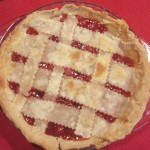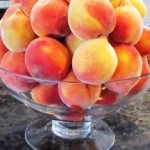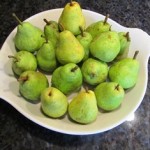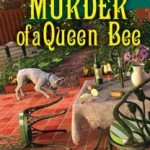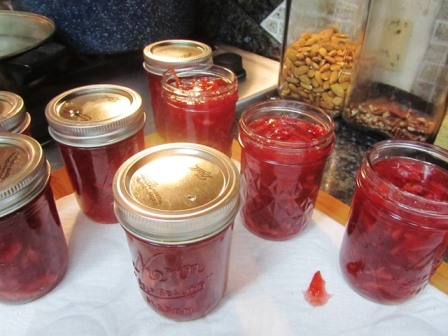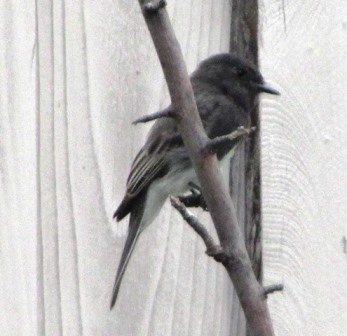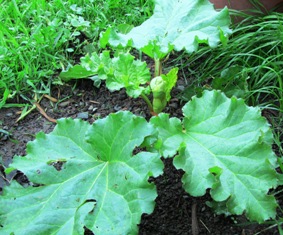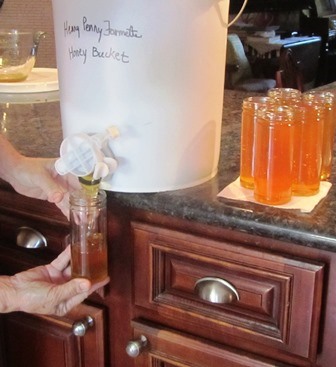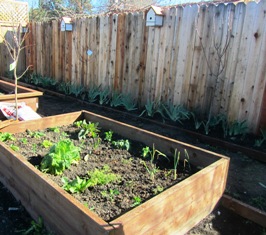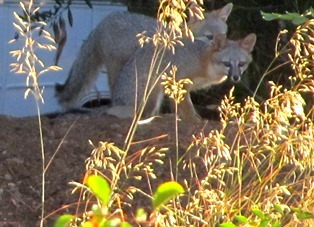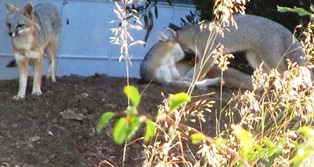Swimming in Fruit
Our cherry trees became so heavily laden with fruit this year I couldn’t work fast enough to make the fruit into cookies and pies and jars of jam, conserve, and chutney.
What fruit the birds and squirrels didn’t devour ended up drying on the trees and looking like ornaments. I’m heartened that at least the wildlife will have something to forage on through fall and winter.
The apricot trees did a massive drop of their fruit and seemingly all at once. I made more jam than we’ll probably eat, dried some, and gave away more than a few full buckets of cots to neighbors and friends. I also had to do a messy cleanup of fruit on the ground.
In the cycle now are the summer peaches; so, here I go again . . swimming in fruit.
Next year, I’m going to get my act together early with teams of backyard pickers who can help me remove the fruit, divide it, and distribute it. Right now, however, I’ve got peaches to pick and preserve. The summer pears and figs will be next.
I’m not complaining; I’m enthralled that all this bounty is due to the work of our industrious little honeybees. All this fruit and I haven’t even mentioned finding time to harvest honey. Yet, the bees don’t stop, so neither will I.
________________________________________________________________
If you enjoy reading about farmette topics like keeping bees and chickens, caring for an orchard, or growing heirloom herbs and vegetables, check out my mystery series from Kensington Publishing (due out September 26, 2017).
These novels feature a whodunnit for you to solve and are filled with farming facts, trivia, and delicious recipes. The novels and my other books are available in traditional and online bookstores everywhere. See, http://tinyurl.com/yb42zd2d
20 Things to Do on a Farm When It’s Raining
Rain . . . unrelenting rain makes working outside near impossible. Since rain is in the forecast for the rest of this week, I’m doing indoor projects here on the Henny Penny Farmette. Why? Because let’s face it: try driving screws into wet fence boards or digging when the earth is like a giant mud ball, or pruning trees when looking upward against a downpour is rather ridiculous. Here are some things to do inside until the weather clears up.
1. Clean the clutter from the kitchen and test some new recipes
2. Read seed catalogs
3. Order beekeeping supplies (to be ready when the weather turns warm and the bees get active)
4. Make a batch of blood orange marmalade (since blood oranges are ripe now)
5. Feed bees, birds, and other wildlife
6. Work on indoor renovation such as finish the installation of base boards and crown moldings
7. Sew curtains; make a quilt, or start an embroidery or knitting project
8. Start the spring cleaning in one or more indoor rooms
9. Plan the spring vegetable garden on paper with a drawing
10. Clean out closets and recycle unused items from cupboards and drawers
11.Make herbal teas (for example: dried leaves of herbs such as mint, dried lemon or orange peel, spices, rose hips, and dried berries)
12. Catch up on your reading for pleasure or books and periodicals about farm and homesteading topics
13. Bring your beekeeping or gardening journal up to date
14. Order supplies–antibiotics for the chickens or medicines for your bees and other domestic stock
15. Bottle honey from the bucket and affix labels
16. Make a dazzling dessert
17. Mend clothing
18. Start working on the taxes for the upcoming season
19. Play your fiddle, piano, horn, or drum
20. Start heirloom seed in flats or get some sprouts growing in a jar
* * *
If you enjoy reading about farming topics, check out my cozy mystery series from Kensington: A Beeline to Murder, The Murder of a Queen Bee, and A Hive of Homicides. Delicious recipes, farm lore, and tips for keeping chickens and bees add to the charm of these delightful mysteries.

- COMING September 2017
- These books are available through online retailers and traditional bookstores everywhere.
See, http://tinyurl.com/hxy3s8q
A Beeline to Murder is the debut novel that launched the Henny Penny Farmette series of mysteries.
See, http://tinyurl.com/h4kou4g
The second cozy mystery in the Henny Penny Farmette series is garnering great reviews from readers and industry publications.
Collecting and Storing Sunflower Seeds for Next Year’s Garden
Drying heads of sunflowers and storing the seeds is easy. If your sunflowers have dry heads, ranging in size from saucers to large dinner plates, and they have turned brown and most of the petals have fallen off, the seeds are ready for harvesting.
Simply place a paper bag over the drying head and band it or tie with string to keep the birds and squirrels from foraging. Trust me, they’ll eat all your seeds if you permit it. The bag keeps the seed from dropping onto the ground to be foraged by wildlife or to generate new plants.
I like to the cut off the head, leaving eight or so inches of stem on it. This way, there is stem to tie and hang so that the head is positioned upside down in a bag. This position can facilitate the drying and captures all the seed while hanging in a drying shed. Retain this bag of seeds for replanting. The seeds are how the sunflower reproduces itself. Sunflower heads can hold thousands of seeds, depending on the size.
A word of caution here: don’t harvest the seeds and leave them drying in a tray in your shed the way I did. That will attract rodents. A coffee can with a plastic lid works great for storing sunflower seeds.
The best seeds for snacking are the gray and white striped sunflowers. There are other types of seed–for example, a black one and grayish-white seed, but the striped seeds are delicious. After you chew open the hull and spit it out, there’s a lovely seed inside it that tastes great and is nutritious.
Outfoxing the Foxes
The chickens made such a ruckus this morning, I thought they were having trouble with a rodent in the hen house. My architect husband built the sturdy hen house off the ground.
He installed windows for air circulation and to cool off the chicken house at night. Good idea, we thought. Maybe not.
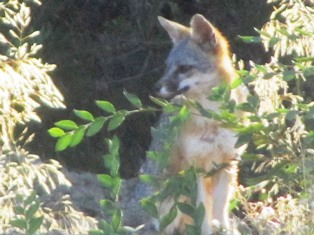
One of three gray foxes that have been checking out the chicken house at dawn and in the late evening
The windows open (to let out the heat) through screens. But foxes and open windows present a clear and present danger for the chickens.
When I first spotted the foxes on the uninhabited acre of land behind our farmette, I put extra poultry wire over the chicken run and over the hen house windows.
Each night, I secure the iron gate between the properties. The foxes were close this morning. I couldn’t say whether or not they’d go over the fence, but I took some shots with my camera before they spooked and left.
To outfox the foxes, I added extra roofing to the chicken run and inspected the fence all around to make sure there were no holes or weakened areas where the foxes could dig under.
We’ve placed a call to the local wildlife shelter and are hopeful that a representative can help us understand why the foxes are in an urban area (maybe in search of water and food during this intense drought) and whether nor not they will rescue the lovely little gray fox family, which is our hope.
 Facebook
Facebook Goodreads
Goodreads LinkedIn
LinkedIn Meera Lester
Meera Lester Twitter
Twitter





